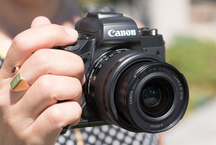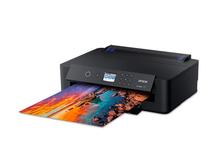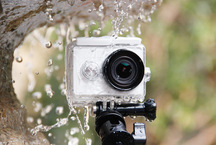Top 15 lenses for Canon cameras



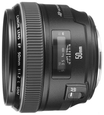

Being still the leader in the digital camera market in general, the Japanese company Canon has the largest market share in interchangeable lenses. Especially well for those who choose the Canon technique, the fact that the bayonettes are well-designed here: the lens with an EF bayonet designed for full-frame cameras can be easily put on cameras with a “crooked” matrix using the EF-S bayonet, and with a simple an adapter - and on cameras with EF-M or RF bayonet. Simply put, the owner of a full-size “SLR” can also have light cameras (up to the EOS M5 compact) and use only one set of lenses for this entire fleet of equipment, buying only “carcasses” for them.
And the situation requires - the quality of Canon optics really corresponds to the name of the company. Well, if you bought a camera with whale optics, and its capabilities are not enough for you, this article is just for you. In our rating - the best lenses Canon 2018-the beginning of 2019 (according to reviews of amateurs and experts).
Top Canon 2019 Lens Rating
| Category | A place | Name | Rating | Price |
|---|---|---|---|---|
| Best Canon Standard Lenses | 1 | Canon EF 50mm f / 1.2L USM | 9.8 / 10 | 79 000 |
| 2 | Canon RF 50mm F1.2L USM | 9.7 / 10 | 180 990 | |
| 3 | Canon EF 50mm f / 1.4 USM | 9.6 / 10 | 26 880 | |
| 4 | Canon EF 50mm f / 1.8 STM | 9.5 / 10 | 8 899 | |
| Best Canon lenses for portrait shooting | 1 | Canon EF 85mm f / 1.2L II USM | 9.9 / 10 | 97 893 |
| 2 | Canon EF 135mm f / 2L USM | 9.8 / 10 | 53 880 | |
| Canon's best zoom lenses | 1 | Canon EF 24-70mm f / 2.8L II USM | 9.8 / 10 | 93 990 |
| 2 | Canon RF 28-70mm f / 2L USM | 9.7 / 10 | 235 990 | |
| 3 | Canon EF 24-105mm f / 4L IS II USM | 9.7 / 10 | 72 260 | |
| 4 | Canon EF-M 18-55mm f / 3.5-5.6 IS STM | 9.2 / 10 | 13 740 | |
| Canon's best telephoto lenses | 1 | Canon EF 70-200mm f / 2.8L IS II USM | 9.7 / 10 | 100 290 |
| 2 | Canon EF 400mm f / 5.6L USM | 9.5 / 10 | 65 350 | |
| 3 | Canon EF 70-200mm f / 4L IS USM | 9.4 / 10 | 62 315 | |
| Canon's Best Wide Angles | 1 | Canon EF 35mm f / 1.4L II USM | 9.8 / 10 | 95 309 |
| 2 | Canon EF 11-24mm f / 4L USM | 9.5 / 10 | 139 900 | |
| Top Canon Macro Lens | 1 | Canon EF 100mm f / 2.8L Macro IS USM | 9.7 / 10 | 46 900 |
| 2 | Canon RF 35mm f / 1.8 Macro IS STM | 9.4 / 10 | 38 990 | |
| The best fisheye lenses | 1 | Canon EF 8-15mm f / 4.0L Fisheye USM | 9.6 / 10 | 59 000 |
Best Canon Standard Lenses
|
79 000
This lens is a luminosity champion: it is difficult to achieve f / 1.2 even for the giants of the optical industry. In practice, this allows the photographer to achieve a minimum depth of field, fully emphasizing the frame on the subject. Moreover, the mechanism of the diaphragm itself provides a microscopic level of distortion. The image from the EF 50mm f / 1.2L USM looks soft, with rich color reproduction. Even insignificant chromatic aberrations along the edges of the image fit perfectly together with this - yes, the lens is not universal, but in the studio of a photo artist who is able to beat the character of optics, he simply has to be. The autofocus mechanism here is slow, but this is not to be reproached - in front of us, we repeat, not a reporter. “He does not photograph, but draws” - these words of one of the owners perfectly characterize both the features and the purpose of the lens. Main advantages:
Minuses:
|
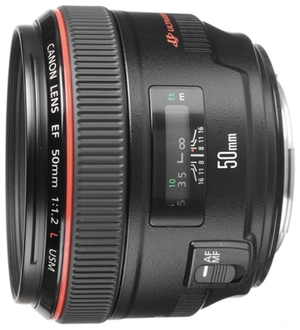 9.8 / 10
Rating
|
|
Canon RF 50mm F1.2L USM
180 990
The EOS R system started with a small but very interesting set of lenses for your bayonet. The high-aperture “fifty-kilo-elka” ultrasound-driven focusing is not cheap (although the prices for L-series lenses have never been particularly low) have been massive (almost a kilogram!) And even purely tactile causes the feeling of a thing made qualitatively and permanently. Getting good sharpness at this open aperture is not an easy task. A lot of lenses, and Canon, among others, require covering the diaphragm even at lower luminosity in order to get rid of the “soap”. However, the “open” lens is decently sharp, vignetting is more serious on such an aperture. Chromatic aberrations - minor, easily removed when processing RAW.Starting with f / 2.0, sharpness becomes excellent at all even in the center, at least along the edges. The diaphragm is assembled on ten rounded petals. After all, we are taking a bright “fifty dollars” for a reason, right? The bokeh of it is really beautiful, the aperture allows you to bring out a maximum of unnecessary parts from the depth of field. Another thing is that the author personally would have called faceless bokeh: “if a person opens the diaphragm, the lens will draw circles”. Although, of course, this is better than the “torsion” that has already bothered thousands of photos. What do we say twisted bokeh? "Not today". An old acquaintance - the annular ultrasonic autofocus drive - as always, is fast, silent and allows you to use manual focus control without having to switch to MF mode. Autofocus dual-mode - with a full range (from 0.4 m to "infinity") and with a reduced (0.8 m - "infinity"). There is nothing new, everything is familiar and traditionally excellent. But the camera control ring entered on the RF lenses is a useful thing: an extra setting “at hand” (however, you can literally without quotes) will not hurt. For example, working in the aperture priority mode, you can control it not with the camera wheel, but with the hand holding the lens, as on manual optics. Main advantages:
Minuses:
|
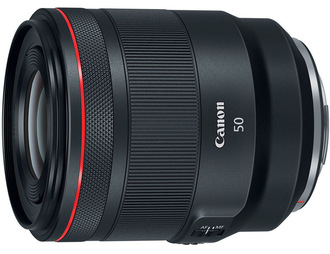 9.7 / 10
Rating
Reviews
Both the quality of the picture and the speed of the focus were very pleased - here both “art” and purely street shooting “from the hip” are possible. |
|
Canon EF 50mm f / 1.4 USM
26 880
Canon's pleasant in pattern and bright fifty-middle link does not contain anything particularly interesting in the design - the “middling” as it is. He has a good sharpness - someone even uses soft filters with him for portrait shooting. Well, a very decent luminosity is good not only as an end in itself, but also allows focusing with limited illumination even to owners of not very new cameras, where the autofocus sensors are “blind”. For crop cameras, by the way, it becomes especially interesting as a portrait painter, it is often bought for this very purpose. On a fullframe, he, as befits a “fifty kopeck”, is quite versatile “for every day,” and even small dimensions with moderate weight contribute to this. Since we are talking about portraits, the lens has enough strengths in this regard. Good detail in the zone of depth of field, color reproduction, beautiful working out bokeh - this is not to take away from him. Actually, the popularity of the lens allows you to find a lot of photos in this genre when searching by model on the same 500px or Flickr, you can see for yourself. But, covering the diaphragm, note that then you may have to work with retouching - the microcontrast of the lens becomes pronounced, emphasizing all the slightest defects of the skin. Or immediately go back two paragraphs above, where we recalled the soft filters. The "character" of the lens is, so at least take it for a "test drive" for friends is worth it: it is likely that you will like the EF 50mm f / 1.4 USM. Autofocus - ultrasonic, but not a ring type. The speed is good, the slips are rare, especially if you work on one central point. When using several, the camera may already be "confused", as on many other high-aperture lenses due to the small depth of field with an open aperture, on which the focusing takes place. But not without flaws, alas. The lens in a plastic case is quite gentle, protect it from drops and bumps. This is not the old Japanese manual like SMC Pentax-M, which can be dropped on the floor and landed on top of all 120 kilograms of the author without any consequences (just don’t ask how it happened). When wearing it is necessary to force the lens to "infinity" in order to avoid "trunk injuries", which travels to MDF quite far.On the open diaphragm, obvious chromatic aberrations are visible (especially with unsuccessful light), strong vignetting - you will have to work in a RAW converter, correcting the imperfections of the lenses with your hands. Main advantages:
Minuses:
|
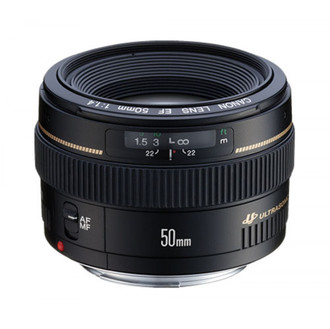 9.6 / 10
Rating
Reviews
It stands at 800D. Autofocus without complaints, I like drawing very much - like a portrait painter in nature, in the city I am just right. |
|
However, not everyone can afford a top-end "fifty" Canon. Well, if you do not have enough luminosity of the whale lens on an inexpensive "SLR", then ten times cheaper you can buy a good "fifty". Having a minimum aperture of 1.8, the lens blurs the background quite well, especially since the seven petals with rounded edges draw this very blur very decently. For a novice photographer, it is also important that the lens at the minimum aperture is well compatible with autofocus: the same f / 1.2L USM will require more frequent manual focusing. Here, even in low light, most cameras will ensure focus accuracy at the center point, and the focusing system itself works quickly and silently. In addition, the lens is quite versatile. Good sharpness of the image is useful both in reportage and for portraits - the lens focuses from 35 cm so that it can take a close-up face. If in your hands there is a “spiked” camera, then, getting an equivalent focal length of 75-80 mm, it becomes the best low-cost lens for a portrait photo. At the same time, it is even more interesting than the twice more expensive Canon EF 50mm f / 1.4 USM, which, in comparison, is unnecessarily harsh and tough in transmitting half-tones, although it flaunts an ultrasonic autofocus. Main advantages:
Minuses:
|
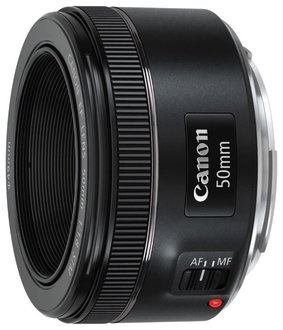 9.5 / 10
Rating
Reviews
Replaced the whale lens on this. Now there are fewer "defective" frames, and I spend almost no time on processing. |
Best Canon lenses for portrait shooting
|
Already the second generation of the undoubtedly legendary portrait lens top class. The unique texture of the bokeh, the clarity of lines and the saturation of colors - this is exactly what makes the lens popular, despite the considerable price. Moreover, the sharpness does not suffer an iota in any position of the diaphragm - that is, opening it as much as possible in order to concentrate attention on the object of shooting, you will not have to sacrifice anything. That is why the EF 85mm f / 1.2L II USM is really perfect as a portrait.
Compared with the previous generation, the speed and accuracy of autofocus is increased - the lens is useful not only in the studio, but also on the street. However, without a tripod, its weight will start to show itself: the lens weighs a whole kilogram, and the elephant-like EOS 1D will not outweigh the advance. Main advantages:
Minuses:
|
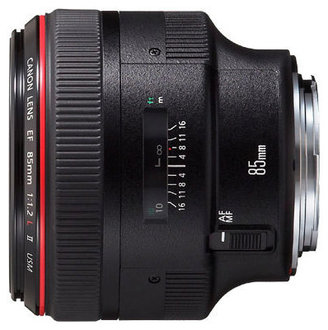 9.9 / 10
Rating
Reviews
Before this lens you need to grow - it will not give a great shot by itself, but in capable hands it is capable of the impossible. |
|
53 880
Portrait telephoto lens? Yes, the EF 135mm f / 2L USM is ambiguous, but we love portrait photographers: almost everything we said about the leader of the Canon lens rating is also true for him. Moreover, only a sophisticated eye will find in the finished photo the characteristic differences between these two lenses - and almost half the price will push many to come to terms with the non-standard focal length for portrait photography.
For the 135mm lens here is a great aperture,and the versatility of this optics is also worthy of respect - thanks to the long focus, it allows you to photograph distant, fast-moving objects at low shutter speeds, and at the same time, the round aperture gives excellent background blur, valuable for portrait painter. Another thing is that they will have to shoot portraits in a spacious studio or on the street - an 18-degree field of view affects. Main advantages:
Minuses:
|
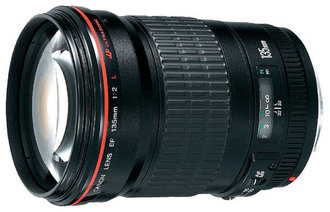 9.8 / 10
Rating
Reviews
Gorgeous station wagon - I try to take pictures of them as much as possible, portrait shooting on the street - only them. |
Canon's best zoom lenses
|
The winner of the TIPA Award 2013 in the Best Professional Lens nomination is surprisingly sharp: at any focal length, even at the edges of the image, he draws the image at the minimum aperture so sharply that it is hard to believe that the frame was made by a zoom lens. It is possible to find fault unless on the maximum zoom, but to find fault.
The glory of the “wedding lens” is not surprising - it copes with group photos and with individual portraits (although in terms of the quality of background blur, it loses with specialized optics), allowing the photographer to work all day with one lens. In addition, the lens works perfectly in backlight - this property is indispensable for street shooting. As for the plastic case, this is a plus and a minus - of course, I want to have an “unkillable” metal lens, but it’s much easier to work with hands on plastic for several hours. Main advantages:
Minus:
|
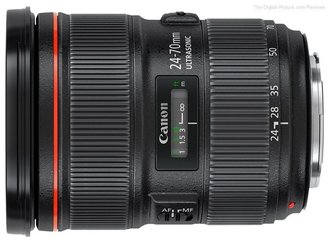 9.8 / 10
Rating
Reviews
I constantly work with him, I even changed “Nikon” for “Canon” because of this. Customers are satisfied. |
|
Canon RF 28-70mm f / 2L USM
235 990
Khe-khe! Yes, the product card in online stores makes cough. And from the price, and from the weight of almost one and a half kilograms, and from the dimensions, decent telephoto. He involuntarily asked to quit that Canon decided to compensate for the dimensions and weight saved by the cameras themselves on top RF lenses. But the “glass” itself, of course, came out as it should. A “two” relative aperture over the entire focal length range is a very good aperture for a zoom lens. The range of focal lengths is convenient - here you have a rather wide “end”, and the seventieth for portraits. For wedding photographers, their inner Hamster should scream briskly (though its neighbor, Toad will immediately begin to recalculate the price of the lens to the number of weddings that need to be worked on while the lens will only pay off). Taking into account the fact that the diaphragm is nine-lobed, as a “portrait” and for artistic photography, when high-quality background blur is required, the lens is fully consistent. Autofocus quality - no comment: the ring USM-drive silently sharpens the lens at the desired point for a tenth of a second. FTM, as an integral attribute of this design since its appearance in the early nineties, is more likely “to be” than a really necessary thing. The quality of optics, including UD-elements, is such that it is difficult to find fault. Chromatic aberrations will have to be sought out under a magnifying glass, vignetting is noticeable only at the “wide end” to f / 4, barrel distortion completely disappears, starting at a focal length of 35 mm. The backlight is practiced confidently and even beautifully - with even multipath stars without rough glare, it can be used in an artistic photo as a "trick". Main advantages:
Minuses:
|
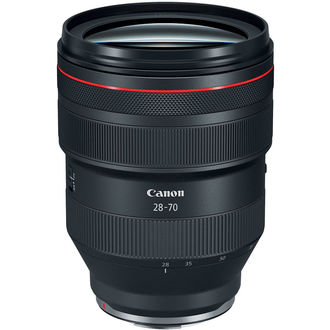 9.7 / 10
Rating
Reviews
Fully consistent as a reportage and as an artistic lens. But, of course, “not for everyone” - roads, heavy, great. |
|
Another winner of the TIPA Award, and a new one, he received his Best DSLR Standard Zoom Lens award this year. A wide range of focal lengths achieved by the use of 17 lenses, divided into 12 groups. True, the luminosity had to suffer - it is even less than that of the good old Soviet "Helios", but the functionality, of course, is not comparable.
It is important to have an effective optical stabilizer, when shooting with it, it will allow you to make a lot more quality shots. Compared with the previous version, the aperture mechanism is improved: it now has 10 rounded petals, which has a positive effect on the possibility of using the lens in portrait photography. Fans of video filming should take into account that this lens is not very good for working with zoom directly while shooting - during focusing, the focus “floats away” slightly, and the lens itself rustles noticeably. Main advantages:
Minuses:
|
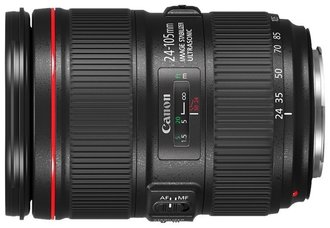 9.7 / 10
Rating
Reviews
I bought it last year for work on the street - buildings, portraits. Excellent dust and moisture protection plus stabilizer - the most it. |
|
High-quality optics, especially for system cameras, should be expensive. But the Canon EF-M 18-55mm f / 3.5-5.6 IS STM is not the case. For a very modest price amateur photographer gets a light and compact model, suitable for taking pictures in different genres. Ideal optics primarily for shooting landscapes - this contributes to the 18-millimeter focal length. Optical stabilizer allows to make the exposure longer. Good and portraits are obtained. Although it will not be possible to get a truly beautiful bokeh - the wide-opening diaphragm does not affect it. The lens will be an excellent choice for lovers of video. You will appreciate the STM technology, which makes focusing as smooth as possible. Main advantages:
Minuses:
|
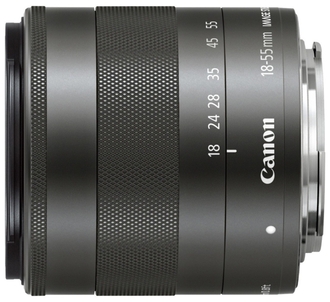 9.2 / 10
Rating
|
Canon's best telephoto lenses
|
Having received the Best Professional Lens TIPA award in 2011, this lens is also relevant six years later. By the standards of long-focus lenses, it is short enough, but bright, and the ability to quickly reduce the focal length is almost three times indispensable for sequential shooting. And the speed of focusing here is in no way inferior to the newest models of “reportage”.
But during this time, the reputation has been accumulated - despite the complicated mechanics, among the EF 70-200mm f / 2.8L IS II photo reporters, the USM has earned the fame of being practically unkillable, whatever the situation. The optical stabilizer, coupled with the "foot" (hold for it seems to be not designed, but you really want it) at the bottom of the lens allows you to work efficiently with your hands at maximum zoom - the lens is fully capable of 1/30 second exposure without a tripod. However, for artistic work, the lens doesn’t fit very well - especially reportage sharpness, coupled with a noticeable doubling in the bokeh zone, does not look very nice. Main advantages:
Minuses:
|
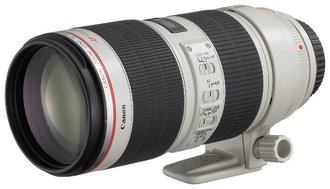 9.7 / 10
Rating
|
|
65 350
And now we have a “full-blooded” telephoto lens without the possibility of changing the focal length, and even what - 400 mm is quite a lot for a full-size one, they will turn into all 600 on the “sprinkled” matrix. Photograph craters on the Moon? Why not?
Naturally, the luminosity pays for such a focal length - for shooting in low light you will need a camera with a very good matrix. By itself, the lens loves bright light, this is noticeable not only in color, but also in changing the sharpness of the image. It is not surprising that in most frames showing the work of the EF 400mm f / 5.6L USM, you can see the African savanna: this is actually the most comfortable element for him. It is more surprising that the lens does not have an optical stabilizer - it is not easy to remove even with a tripod with a 400-millimeter RF. Main advantages:
Minuses:
|
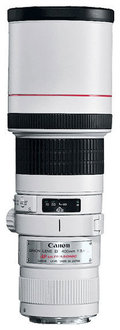 9.5 / 10
Rating
Reviews
The best lens for photo hunting - it allows you to work at such distances that animals do not notice you. |
|
You can not be afraid to use the Canon EF 70-200mm f / 4L IS USM even at the stadium, where modest floodlights act as a source of lighting. If the aperture is not enough - you can make the shutter speed longer - the lens has an optical stabilizer, it allows you to not be afraid to get a blurry frame. Unfortunately, the focal length range is not very wide. Therefore, shooting of, say, shy birds can cause problems. But this model is able to please a comfortable weight - the lens does not need to be mounted on a tripod, the camera with it can be held in hand. Main advantages:
Minuses:
|
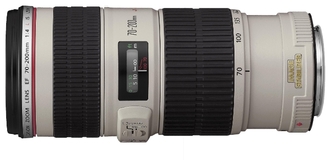 9.4 / 10
Rating
|
Canon's Best Wide Angles
|
In this EISA Professional DSLR Lens Award 2016-2017, it is difficult to recognize the wide-angle - by the eye here 70 mm focal length. Yes, and he weighty pretty - almost 800 grams. This was due to the use of 14 lenses in the lens, which, in turn, promises a low level of distortion.
The marking immediately gives out a representative of the top series, even if you do not look at the price - L indicates first-class optics, USM - an ultrasonic focusing system. And the lens really came out excellent: only on the diaphragms less than 2.8 noticeable vignetting, on all the others the level of distortion is imperceptible. The high clarity of the image at the focus point is perfectly complemented by soft bokeh beyond the depth of field. Even the hard backlight will not be able to spoil the image. Main advantages:
Minuses:
|
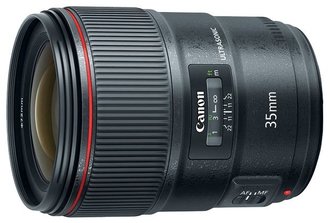 9.8 / 10
Rating
|
|
139 900
The lens in its assets has two awards: TIPA Best Professional Lens 2015 and EISA Professional DSLR Lens 2015-2016. Moreover, it can turn from a simple wide-angle into an extra-wide rectangle, while the huge front-lens front lens makes it only fisheye in appearance: although straight lines inevitably fall down to the center, they remain perfectly straight.
Payback for this was the complexity of the optics, and hence the aperture for the wide-angle. The lens is noticeably darkish, but if you look at the pictures, this is another excuse - there is not only barrel distortion, but also chromatic aberrations, even with a minimum focal length, which allows skyscrapers to fit easily into a frame. Main advantages:
Minuses:
|
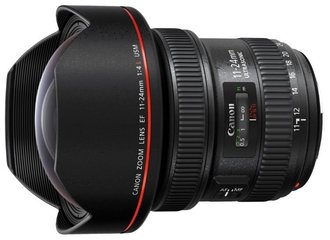 9.5 / 10
Rating
Reviews
Truly unique, the best lens ever. It is a pity that the price for infrequently commonly used optics is too high. |
Top Canon Macro Lens
|
Due to the possibility of focusing at 30 centimeters and a sufficiently large focal length, this lens is undoubtedly the best in the Canon lineup for macro photography. To this we add all the attributes of the top-end series - high-end optics, ultrasonic autofocus, and even an effective optical stabilizer. The image stabilizer, by the way, first appeared on Canon macro-optics. The focusing system has three modes - “traditional”, from half a meter to infinity, and specialized, in the range of 0.3-0.5 m. The third FULL mode allows you to move from one subject to another at all distances, but autofocus operation at the same time, it is slower and rougher, so it is worthwhile to use the switch more often. The clarity and contrast of the image is exactly what you expect from a high-end lens - on the frames you can easily count the chitinous bristles on the abdomen of the bumblebee. Main advantages:
Minuses:
|
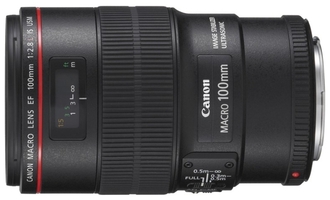 9.7 / 10
Rating
Reviews
I used earlier version without stabilizer - now it is much more convenient to work with a new lens. Image quality is exactly what you expect from the "red ring". |
|
Canon RF 35mm f / 1.8 Macro IS STM
38 990
After viewing the "Elek" catalog under the RF bayonet, this lens allows the Hamster to rest from the battle with the Toad. The quite reasonable price, and dimensions with weight, not shocking from the very beginning of the acquaintance, make this Canon lens very interesting. With a minimum focusing distance of 17 centimeters, it is quite consistent as a macro lens. In addition, macro photography can be carried out at long exposures, in an uncomfortable position - the built-in optical stabilizer with a range of 5 stops will always help out. Optics, of course, not "Elechnaya." Chromatic aberrations are already clearly visible, the photo will have to be corrected. Sensible and "barrel" and vignetting. However, this is also corrected - however, if you use Lightroom, then autocorrection will be unavailable: Adobe has not yet “released” the profile for this lens. Fortunately, the correction of peripheral lighting and distortion is supported by the EOS R cameras themselves, and Canon did not forget to create profiles under the lens. Sharpness is not bad at an open aperture, and “full order” comes from f / 2.8 and further to f / 11 - then the effect of diffraction becomes noticeable. Autofocus is assembled on a stepper motor. It is not as fast as USM, but it is not satisfactory. The focus noise is minimal. Given the wide field of view, perhaps this lens can also be loved by video bloggers who film themselves as loved ones in a limited space (well, that is, at home on the couch). Manual focusing, like other STM lenses, is “virtual” - the ring is not mechanically connected with optics, does not work when the power is off. Nine-petal diaphragm and good luminosity allow you to think about bokeh. Yes, the quality of the blur is not bad, although the small focal length and more “sharpened” under macro photography design limit the use of the lens - say, a spider on the bokeh branch will be beautiful, but the growth photo of a person will immediately hint to get “fifty dollars”, or even a lens longer. " Main advantages:
Minuses:
|
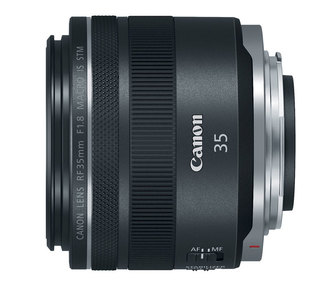 9.4 / 10
Rating
Reviews
For EOS R, in my opinion, from the category of mast hev is a good picture and compactness, which will not be the case when using EF macrooptics via an adapter. |
The best fisheye lenses
|
This is not the most perfect in the Canon's top line of “fish”, but, given that it is more than two times cheaper than the Canon EF 15mm f / 2.8 Fisheye, which, besides, doesn’t have the ability to play with a focal length, 8-15mm f / 4.0L Fisheye USM championship in this category of rating. It is difficult to find fault with the image quality - anyway, this is the L-series. Certain chromatic aberrations with a minimum focal length are inevitably present, but are easily eliminated at the RAW post-processing stage. The very possibility of changing the focal length makes it easy to play with effects, moving from diagonal to circular distortion. There are two drawbacks to the lens: a controversial mount of a standard blend, which can easily break (and scratching a protruding lens is not difficult), and the inconvenience of manual focusing - the ring travel is too small; Main advantages:
Minuses:
|
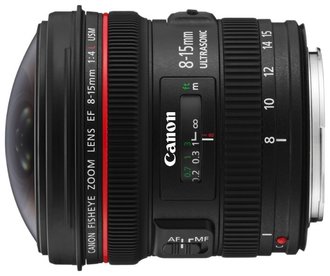 9.6 / 10
Rating
Reviews
Funny lens - it is also a super-wide-angle with a characteristic diagonal, and a hard “circular” if desired. |
How to choose a lens?
First, let's look at the focal length. Initially, each lens had a fixed focal length, which, in relation to the diagonal of the frame, determined its application.
Standard for small-format film cameras, and now for fullframe-digital cameras, a focal length of 50 mm is considered. The fact is that with such frame sizes, the angle of view of a 50-millimeter lens is almost equal to the viewing angle of the human eye, that is, with such a lens, the camera “sees” like a human eye. But in practice, much more options are needed - for example, the class has been distinguished. portrait lenseshaving not only increased focal length (70-90 mm), but also increased luminosity: such a lens emphasizes the composition of the frame at the center and focus, beautifully blurring the background, gives excellent detail and a low level of distortion.
And what to do when you need to remove from the removal? Here you need telephoto lens - an essential attribute of the camera reporters and paparazzi, such lenses sometimes grow to monstrous sizes: for example, the rarest Canon EF 1200mm f / 5.6 L USM weighs 16.5 kilograms, and when shooting must stand on a strong tripod. When shooting buildings, on the contrary, you need a small focal length (less than 35 mm), providing a field of view wide angle lenses. However, this angle of view also has characteristic distortions - the edges of the frame “collapse” inwards.
Wide-angle development - "fish eye", Where the focal length is minimal (sometimes just a few millimeters), which is why the distortions characteristic of wide-angle optics reach the absolute. The minimum shooting distance for fish eyes is often shorter than that of macro-optics, otherwise with such an angle of view, too much excess will fall into the frame.
For macro photography lenses that are similar in focal length with portrait lenses are used, but their key differences are the ability to focus on ultra-short distances and precision lens processing, providing the least possible distortion.
But what to do if you want to shoot different shots, but there is no money for a set of optics? Well, zoom lenses Invented a long time ago. In them, the optical system is more complicated, but it allows you to change the focal length often within wide limits. Payback for versatility - the loss in luminosity, the growth of distortion, especially in extreme positions of focus. Nevertheless, a good zoom lens can always be found in a professional photographer's case.
There is another interesting point.At the beginning of the article, we mentioned that Canon optics, designed for bayonet full-size matrices, can also work on technology with “spritz” matrices. And here the meaning of the crop factor, indicated in the characteristics of cameras, is revealed. For example, if we remove a normal lens from a full-length, then on a camera with APS-C (Crop Factor 1.6) it will turn in the field of view ... into 80 mm (50 * 1.6)! The 30mm millimeter will be normal for this camera, which will work with a wide angle on the “older” camera. Now you understand why compact cameras with very small arrays have such short lenses? On interchangeable optics, the focal length is most often indicated for the full frame, so for smaller matrices it is necessary to recalculate it when choosing the crop factor of your camera.
If the focal length determines most of the applicability of optics, then its luminosity is the quality and possibilities of shooting in low light. Particularly the luminosity is critical for low-cost matrices, which often have to expose the photosensitivity to such values that noise becomes clearly visible. The luminosity is directly reflected in the minimum possible relative aperture of the diaphragm, that is, the optics with f / 2.0 is lighter than with f / 3.5. Moreover, it is characteristic that the smaller the focal length, the greater the aperture - because of the larger angle of view, the lens transmits more light in the aggregate. Therefore, one should not assume that optics in a telephoto lens with f / 5.0 is worse than in a wide-angle lens with f / 1.8 - these are completely different lenses. But the requirements for the quality of the camera matrix, if desired, to work with teleoptics, of course, higher.
Have a good shopping!
